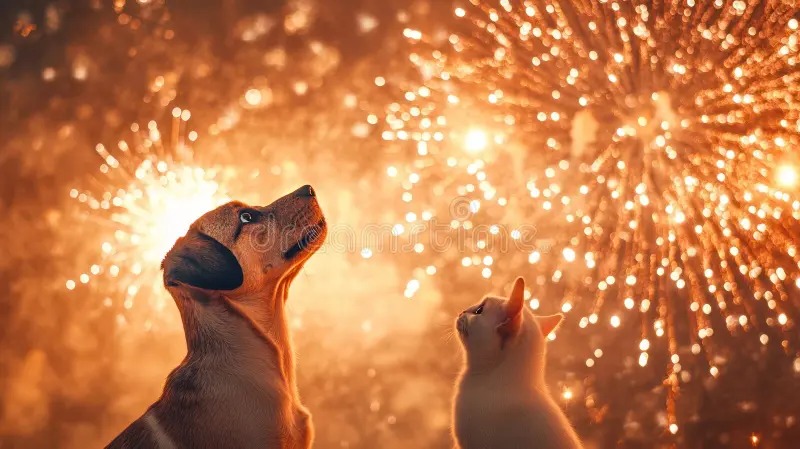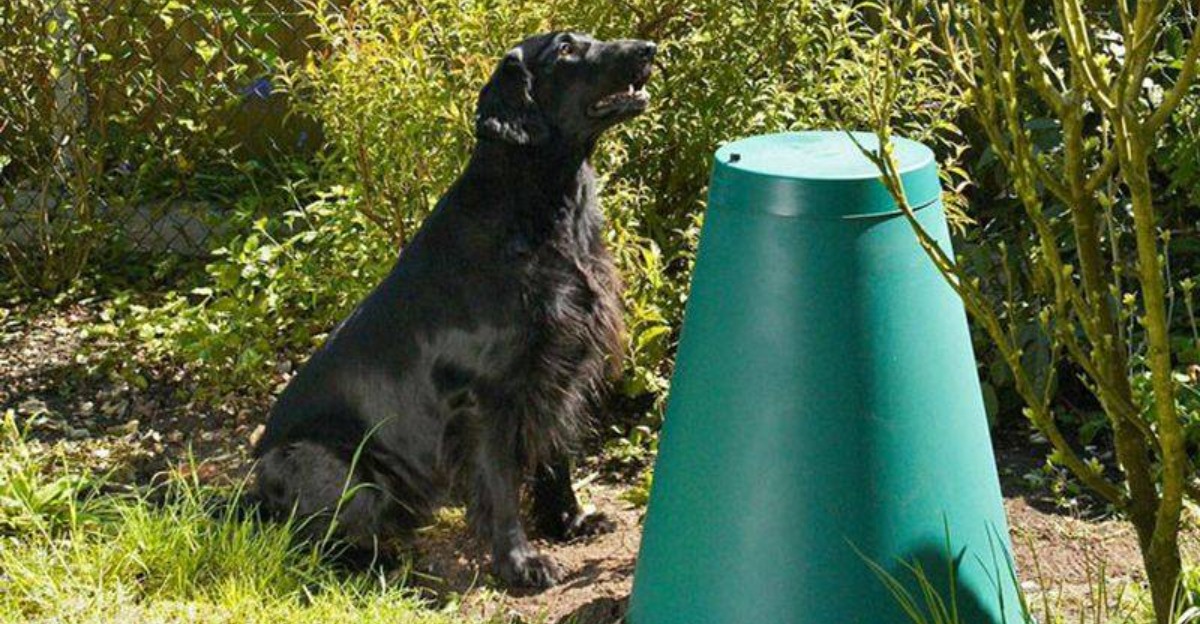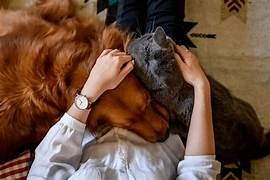
Impact of loud festivals/fireworks in India on pet anxiety & mitigation tips.
“Understanding the Impact of Loud Festivals and Fireworks on Pet Anxiety in India, Exploring How Dogs, Cats, Birds, and Other Pets Experience Stress During High-Decibel Celebrations, Highlighting Behavioral and Health Consequences, and Providing Practical Tips, Mitigation Strategies, and Community-Based Approaches to Ensure Pets Remain Calm, Safe, and Comfortable During Diwali, New Year, Weddings, and Other Festive Events.”
🐶 Pet Star
48 min read · 30, Sep 2025

Introduction
India is a land of vibrant traditions and celebrations. Festivals like Diwali, Holi, Ganesh Chaturthi, New Year’s Eve, and even weddings are marked by joy, color, and often—loud fireworks. While these moments symbolize togetherness and festivity for people, they often turn into periods of extreme distress for household pets, especially dogs, cats, and even birds. The loud sounds, bright flashes of light, and sudden vibrations can trigger intense anxiety in animals, leading to behavioral changes, health issues, and in some cases, long-term trauma.
This article explores how loud festivals and fireworks impact pets in India, the science behind their heightened sensitivity, real-life examples of pet anxiety during festivals, and effective mitigation strategies that owners can adopt.
Understanding Pet Sensitivity to Sound
Why Are Pets More Sensitive?
Humans perceive sound in a frequency range of about 20 Hz to 20,000 Hz. Dogs, however, can hear up to 45,000 Hz, while cats can hear up to 64,000 Hz. This means the sound of a bursting firecracker, which may seem momentary to us, is magnified manifold in a pet’s perception. Additionally, animals lack the cognitive understanding that fireworks are “celebrations.” For them, sudden booms are perceived as threats.
Signs of Anxiety in Pets During Festivals
- Behavioral signs – trembling, hiding, pacing, or clinging to owners.
- Physical signs – excessive drooling, rapid heartbeat, panting, or vomiting.
- Destructive behavior – scratching doors, chewing furniture, or trying to escape.
- Vocalization – constant barking, whining, or howling.
The Festival Context in India
Diwali – The Festival of Lights
Diwali, often called the “festival of lights,” is also the festival of sound. Firecrackers are burst in almost every neighborhood, sometimes continuously for hours. For pets, this is the most stressful time of year, often leading to sleepless nights and panic attacks.
Weddings and Religious Celebrations
Indian weddings are incomplete without fireworks and loud music. Street processions for Ganesh Chaturthi or Durga Puja often include firecrackers and drums. Pets living near such events are directly affected.
New Year’s Eve and Holi
In urban India, New Year’s celebrations often involve fireworks displays at midnight. Holi processions may involve drums and loud speakers. These noises are equally anxiety-inducing for pets.
Real-Life Impacts on Pets
- Runaway Pets: Veterinary reports during Diwali show a spike in missing pets. Terrified animals often flee homes in search of safety, sometimes leading to accidents.
- Health Complications: Noise-induced stress can trigger seizures in epileptic dogs and worsen heart conditions in older pets.
- Behavioral Regression: Pets that were previously well-trained may suddenly display urination indoors or destructive chewing due to stress.
- Birds & Stray Animals: Loud noises also affect non-domesticated animals. Birds are disoriented by fireworks, often crashing into windows or poles. Stray dogs spend nights hiding under vehicles or in drains.
Mitigation Tips for Pet Owners
1. Preparing Before the Festival
- Soundproofing Rooms: Use heavy curtains, closed windows, and carpets to reduce noise.
- Safe Space Creation: Set up a quiet corner with your pet’s favorite bed, toys, and water.
- Desensitization Training: In the months leading up, play mild firework sounds and reward pets for calm behavior.
- Identification Tags: Ensure collars and microchips are updated in case the pet escapes.
2. During Fireworks
- Stay Calm Yourself: Pets mirror human emotions. If owners panic, pets panic more.
- Distraction Techniques: Play soothing music, white noise, or turn on the television.
- Engage With Toys: Use puzzle feeders or chew toys to keep pets occupied.
- Comfort, But Don’t Overindulge: Provide gentle reassurance without excessively coddling, as this can reinforce fear.
3. Veterinary Support
- Anti-Anxiety Medications: Consult vets about calming aids or prescribed medication for severe anxiety.
- Natural Remedies: Products like pheromone diffusers, lavender oils (vet-approved), or calming sprays may help.
- Professional Training: Behaviorists can help in long-term noise desensitization.
4. Community & Social Responsibility
- Awareness Campaigns: Educating neighbors and communities about pet distress can reduce indiscriminate use of fireworks.
- Silent Fireworks: Encourage adoption of light-based fireworks without explosive noise, already popular in parts of Europe.
- Pet-Friendly Celebrations: Organize community festivals with music, lights, and cultural performances rather than loud crackers.
Case Studies
Case 1: A Labrador in Delhi During Diwali
A 5-year-old Labrador displayed severe trembling and refused to eat for two days during Diwali fireworks. With vet-prescribed mild sedatives, soundproofing measures, and soothing background music, the dog’s stress was reduced.
Case 2: Street Dogs in Mumbai
An NGO reported a surge in injured stray dogs post-Diwali. Many had fractured limbs after running into traffic due to cracker sounds. Volunteers set up “quiet shelters” in community halls to provide temporary refuge.
Case 3: Parrots in Kolkata
Several pet parrots reportedly became restless and injured their wings inside cages during fireworks. Covering cages with thick blankets and keeping them in sound-insulated rooms reduced their panic.
Long-Term Solutions
- Policy Interventions: Implementation of stricter rules on firecracker usage, as ordered by the Supreme Court of India, needs better enforcement.
- Innovation in Pet Care: Demand for pet ear muffs, calming jackets (like ThunderShirts), and noise-cancellation devices is rising in urban India.
- Cultural Shift: As urban pet ownership grows, collective awareness must evolve to balance celebration with compassion for animals.
In India, the cultural fabric is woven with festivals that are celebrated with immense fervor, colors, lights, music, and notably, loud fireworks, which, while delightful for humans, often create a high-stress environment for pets, particularly dogs, cats, birds, and even smaller mammals, because their auditory systems are far more sensitive than ours, enabling them to perceive frequencies and intensities that can be painfully overwhelming; for instance, dogs can hear frequencies up to 45,000 Hz and cats up to 64,000 Hz, compared to humans who hear up to around 20,000 Hz, which means that what humans perceive as a brief burst of sound or a distant pop can be experienced by animals as a thunderous, alarming noise that triggers fight-or-flight responses, heightened cortisol levels, and a cascade of physiological and psychological stress responses, often manifesting in tremors, hiding, excessive panting, vocalizations, vomiting, or erratic behaviors such as trying to escape, scratching doors, chewing furniture, or running away from their homes, and these responses are not just limited to the period during which fireworks are actively set off but can begin in anticipation, especially if pets have previously experienced traumatic events associated with loud noises; the festival of Diwali, known as the festival of lights, is perhaps the most notorious in this regard, with entire neighborhoods engaging in continuous firecracker bursts that can last several hours, creating an environment where pets feel unsafe and disoriented, compounded by additional urban factors such as narrow streets, high population density, and lack of accessible quiet spaces, while other festivals such as New Year’s Eve, Ganesh Chaturthi, Holi, and large Indian weddings, which often include fireworks displays and loud music, contribute similarly to noise-induced stress for domestic and stray animals alike; the implications of this stress are multifaceted, ranging from immediate physical manifestations such as increased heart rate, hyperventilation, and gastrointestinal upset, to longer-term behavioral issues including aggression, separation anxiety, and heightened fearfulness, and veterinarians across India report spikes in visits during festival seasons for pets exhibiting these symptoms, with some animals requiring sedation or specialized care, while NGOs and animal welfare organizations note a corresponding increase in stray animal injuries, accidents, and abandonment incidents, highlighting that the issue extends beyond individual households to the broader urban ecosystem; mitigating these effects requires proactive and multi-layered approaches, starting well before the festivals themselves, such as soundproofing rooms with heavy curtains, rugs, and closed windows, establishing a secure safe zone with favorite bedding and toys, gradually desensitizing pets through controlled exposure to recorded firework sounds at low volumes combined with positive reinforcement, and ensuring identification tags and microchips are up to date in case pets flee out of fear, while during the events themselves, owners can implement strategies including playing white noise or calming music to mask external sounds, engaging pets with interactive toys or puzzle feeders to distract them, maintaining a calm demeanor themselves to prevent mirroring of human anxiety, and providing gentle reassurance without excessive coddling, which may inadvertently reinforce fearful behavior; veterinary interventions, when necessary, may include mild sedatives or anti-anxiety medications prescribed by professionals, alongside natural remedies such as pheromone diffusers, lavender oils, and calming sprays, all of which require prior consultation to ensure safety, and in cases of severe phobias or chronic anxiety, behaviorists can develop long-term desensitization and counter-conditioning programs; community-level initiatives are equally crucial, such as promoting the use of silent or light-based fireworks, creating public awareness campaigns about the impact of noise on pets and stray animals, organizing pet-safe shelters during peak festival times, and advocating for policies that balance cultural celebration with animal welfare, especially since India's high urban density and the sheer frequency of fireworks during festivals make noise pollution an unavoidable stressor for both pets and wildlife, including birds, who often collide with windows or disoriented objects due to sudden loud sounds; case studies illustrate these challenges vividly: for instance, a Labrador in Delhi developed intense trembling and appetite loss during Diwali, requiring a combination of environmental modifications, soothing music, and mild sedatives prescribed by a vet to recover; similarly, in Mumbai, NGOs observed spikes in injured stray dogs post-Diwali due to panicked escapes leading to road accidents, while in Kolkata, parrots in households exhibited self-injurious behavior during fireworks, mitigated only through soundproofed enclosures and covering cages with thick blankets, demonstrating that even non-mammalian pets are highly susceptible to stress; ultimately, the goal is to foster an environment where pets can coexist safely with human celebrations, which demands a combination of preparedness, understanding, and compassionate cultural adaptation, encouraging owners to anticipate stress triggers, implement both short-term and long-term coping mechanisms, seek professional guidance when necessary, and participate in or advocate for community-level changes such as noise regulation, silent firework alternatives, and neighborhood-level pet-friendly initiatives, as such comprehensive strategies not only alleviate immediate suffering but also prevent chronic behavioral and health complications in pets, while reinforcing a societal shift towards empathy and responsible celebration, recognizing that the joy of festivals should not come at the expense of the well-being of our companion animals or the safety of urban wildlife, and by integrating these mitigation strategies into annual routines, Indian pet owners can significantly reduce anxiety, promote resilience, and ensure that pets feel secure, cared for, and calm even amidst the sensory chaos of India’s most beloved and loudest festivals.
India is a country renowned for its vibrant festivals, celebrations, and cultural events, many of which are accompanied by loud fireworks, booming drums, and high-decibel music, creating an environment that, while joyous for humans, can be profoundly stressful and anxiety-inducing for pets such as dogs, cats, birds, rabbits, and other small mammals, because animals possess far more acute hearing than humans, with dogs capable of detecting sounds up to 45,000 Hz and cats up to 64,000 Hz compared to the human auditory limit of approximately 20,000 Hz, meaning that what seems like a short, intermittent burst of noise to people can be perceived by pets as continuous, overwhelming, and threatening, triggering an instinctive fight-or-flight response that manifests in both behavioral and physiological symptoms including trembling, excessive panting, drooling, vomiting, pacing, hiding, destructive chewing, scratching doors or furniture, attempting to escape, or even running away from familiar spaces in search of safety; this heightened sensitivity is particularly problematic during major Indian festivals like Diwali, which is celebrated nationwide with firecrackers, sparklers, and loud neighborhood displays that often last for hours or even days, resulting in a significant increase in veterinary visits for anxiety-related conditions, as well as a rise in reports of missing pets, street dog injuries, and other accidents caused by panicked animals; other celebrations, including New Year’s Eve, Holi, Ganesh Chaturthi, Durga Puja, and even large weddings, similarly expose pets to sudden noises and unpredictable bursts of sound, often compounded by fireworks displays in densely populated urban areas, amplified by concrete buildings, narrow streets, and reflective surfaces, which make the sound appear even louder and more chaotic to animals, while the bright flashes of light can disorient pets with sensitive eyes, causing further panic, confusion, and stress, and for birds, the combination of loud noise and rapid lighting changes can lead to collisions, feather damage, or even fatal injuries; the impact of festival-induced anxiety on pets extends beyond immediate stress responses and can contribute to long-term behavioral issues such as generalized anxiety, aggression, phobias, and regression in previously learned behaviors, as well as physical health problems including elevated cortisol levels, increased heart rate, hypertension, gastrointestinal disturbances, and exacerbation of pre-existing conditions like epilepsy or cardiac disease, highlighting the need for owners to recognize early warning signs such as hiding, trembling, excessive vocalization, refusal to eat, or self-harming behavior in order to take timely interventions; mitigation strategies involve a multi-pronged approach beginning well in advance of the noisy events, including soundproofing rooms with thick curtains, carpets, and closed windows, creating a designated safe zone equipped with the pet’s favorite bedding, toys, and access to water, and gradually desensitizing pets over several weeks or months through controlled exposure to recorded firework sounds at low volumes while pairing these exposures with positive reinforcement, treats, and calm interaction to reduce fear associations; during the festival itself, owners can further reduce stress by remaining calm themselves, as pets often mirror human emotions, and by using distraction techniques such as engaging them with puzzle toys, chew toys, or interactive play, playing white noise, classical music, or pet-calming playlists to mask external sounds, and offering gentle reassurance without excessive coddling that may reinforce fear, while in more severe cases, consulting a veterinarian for the use of anti-anxiety medications, mild sedatives, or natural calming products such as pheromone sprays or vet-approved aromatherapy can be highly effective; in addition, community awareness and responsible practices play a critical role in protecting pets, as organizing silent or light-based fireworks, reducing neighborhood-level cracker activity, creating temporary quiet shelters for pets, and educating neighbors about the psychological and physiological impact of loud noises on animals can collectively mitigate the widespread distress experienced by both domestic and stray animals during festival seasons; real-world examples highlight these challenges, such as a five-year-old Labrador in Delhi who developed severe trembling and appetite loss during Diwali, which was alleviated only through a combination of soundproofing, soothing background music, vet-prescribed mild sedatives, and close monitoring by the owner, or street dogs in Mumbai who were observed running into traffic in panic following firework bursts, leading NGOs to set up temporary shelters to reduce injuries and fatalities, and pet parrots in Kolkata who injured themselves inside cages due to sudden loud noises, mitigated only through soundproofing, covering cages with blankets, and creating a quiet room, all of which demonstrate that pets of all species are susceptible to sensory overload during festivals; ultimately, the key to minimizing festival-induced anxiety in pets lies in proactive preparation, awareness, and consistent care, including updating identification tags and microchips, implementing short-term and long-term desensitization techniques, monitoring health and behavior closely, seeking professional guidance for extreme cases, and participating in broader social initiatives to reduce the prevalence and intensity of loud fireworks, as well as advocating for pet-friendly celebrations and responsible festival practices that balance cultural tradition with compassion and concern for animal welfare, because the objective is to ensure that celebrations remain joyous for humans without causing distress, harm, or trauma to the animals who share their homes and neighborhoods, reinforcing the principle that empathy, understanding, and responsible planning are essential components of festival preparation, and by adopting these comprehensive strategies, pet owners in India can significantly alleviate anxiety, promote resilience, and protect the mental and physical well-being of their pets while still honoring the cultural vibrancy and celebratory spirit of the festivals that define Indian society.
Conclusion
Festivals are integral to Indian culture, but their noise-heavy celebrations often come at the cost of animal well-being. Pets experience anxiety, disorientation, and even physical harm due to fireworks and loud festivities. The problem is magnified by India’s density of celebrations and urban environments.
Mitigation is possible through proactive steps like soundproofing, desensitization, vet guidance, and community awareness. Long-term solutions lie in adopting quieter alternatives, enforcing regulations, and fostering empathy within society. A compassionate approach can ensure that our celebrations bring joy not only to us but also remain safe for our beloved pets.
Q&A Section
Q1 :- What are the common signs of pet anxiety during festivals?
Ans:- Trembling, hiding, drooling, excessive barking, destructive behavior, and refusal to eat are common signs.
Q2 :- Why are pets more sensitive to fireworks than humans?
Ans:- Dogs and cats hear higher frequencies than humans and perceive sounds at greater intensities, making fireworks extremely loud and frightening for them.
Q3 :- How can I prepare my home before a noisy festival?
Ans:- Close windows, use heavy curtains, create a safe space with bedding and toys, and play soothing background sounds to mask fireworks.
Q4 :- Are there natural ways to calm pets during fireworks?
Ans:- Yes, pheromone sprays, lavender essential oils (vet-approved), and calming music can help reduce anxiety naturally.
Q5 :- Should I medicate my pet during Diwali or New Year’s Eve?
Ans:- Only if prescribed by a veterinarian. In severe cases of anxiety, mild sedatives or anti-anxiety medication may be necessary.
Similar Articles
Find more relatable content in similar Articles

Social Media for Pets: Turning Your Pet into a Digital..
From playful puppies to charis.. Read More

Virtual Vet Visits: Are Online Consultations Reliable?..
As pet healthcare embraces dig.. Read More

Composting Pet Waste: A Greener Way to Clean Up...
As pet ownership continues to .. Read More

Pets and Mental Health: The Science Behind Emotional H..
Discover the profound impact o.. Read More
Explore Other Categories
© 2024 Copyrights by rPets. All Rights Reserved.